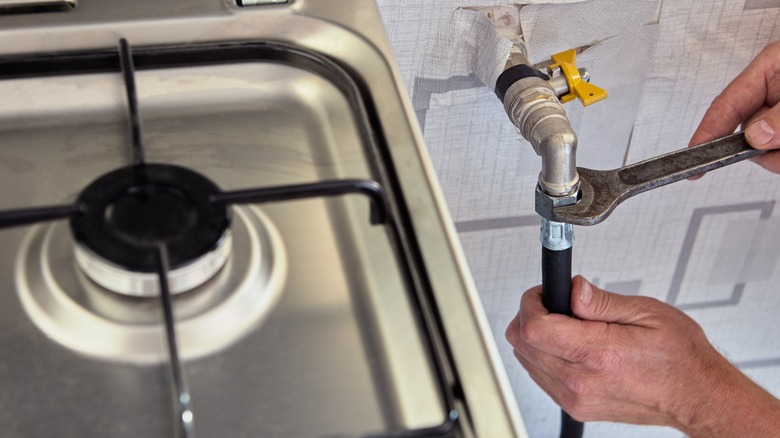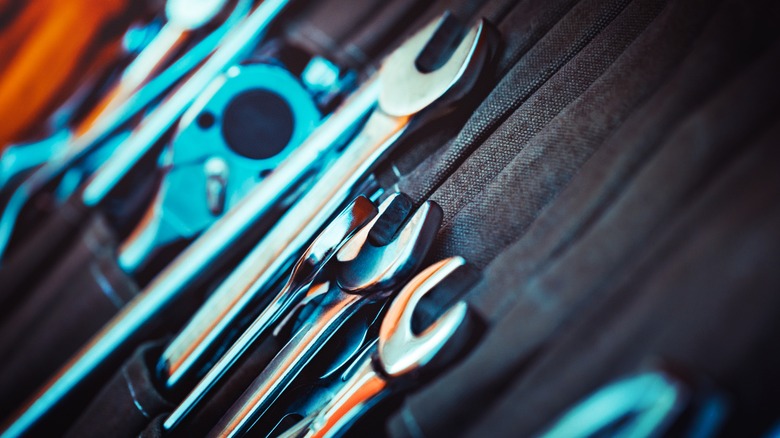All The Helpful Ways You Can Use A Spanner Tool For DIY Projects
Even if you aren't a handyman around the house, you have to keep some tools nearby to take care of the smaller incidents. For the DIY gurus out there, these tools stay used and busy — especially the spanners. Spanners are incredibly important and versatile tools every homeowner should have. Whether you need a bolt tightened or a nut unfastened, they're there to make the impossible happen.
Spanner tools are as necessary as hammers. They torque the nuts and bolts that hold metal together the same way a screwdriver twists screws in and out. Spanners are often confused with their sister tool, the wrench, but they're not the same — though they sometimes perform the same function. Spanners are usually fixed tools without an adjustable jaw, while wrenches have a movable jaw that can adjust to a range of widths. However, there are many types of spanners with various functions. The more you know about these useful instruments, the more success you'll have with your DIY projects.
Appliances often need spanners to replace worn parts
If you follow a lot of DIY projects and hacks, you'll come across a number of steps where you'll need a spanner or two. Fasteners are all around your home appliances, from your oven to your washer and dryer units and even your kid's skateboard. If you want to remove your over-burner nozzle, for example, you'll probably need a spanner. Removing or installing your gas line to the stove also requires the tool to loosen the nut on the pipe. If your dryer bearings or drum need to be changed, you will also need a suitable spanner tool. When it comes to pin spanners, they are perfect for removing the nuts off angle grinders to join and separate them from the grinding pad.
A lot of the time, appliance faults can be attributed to rusty bearings and fasteners. If the rusting is too bad, then you will have to use a spanner tool to get rid of the fasteners entirely. However, if the nut can still be saved, you can remove and replace it. You can find spanner tools and their whole sets and kits at any Home Depot outlet or other home improvement store. Spanners also come in insulated versions in case you need to unfasten nuts on electrical appliances.
Tips and tricks
Spanners are straightforward tools, but there are some things to keep in mind. Obviously, make sure you use the right-sized spanner that fits tightly around the nut. And always pull a spanner — never push. This is to maintain control of the mechanism once the nut unfastens. You also want to avoid using the wrong spanner type for an appliance, which means getting up to speed on your spanner education.
The most basic type of spanner is the single open-ended tool. This isn't a one-size-fits-all instrument because it comes in only one width and is only capable of gripping one side of the nut. A double-ended spanner is just like a single open-end except instead of an empty handle, you have another open-end at the base of the tool. Ring spanners have two looped ends so they grip the bolt or nut on all sides and you don't have to keep alternating sides like you would with the single open-end spanner. Finally, the combination spanner has an open end on one side and a ring spanner at the other end.
Before you jump into your project, consider the type of spanner that works best. Once you know these tools inside and out, your DIY game will be unmatched.


